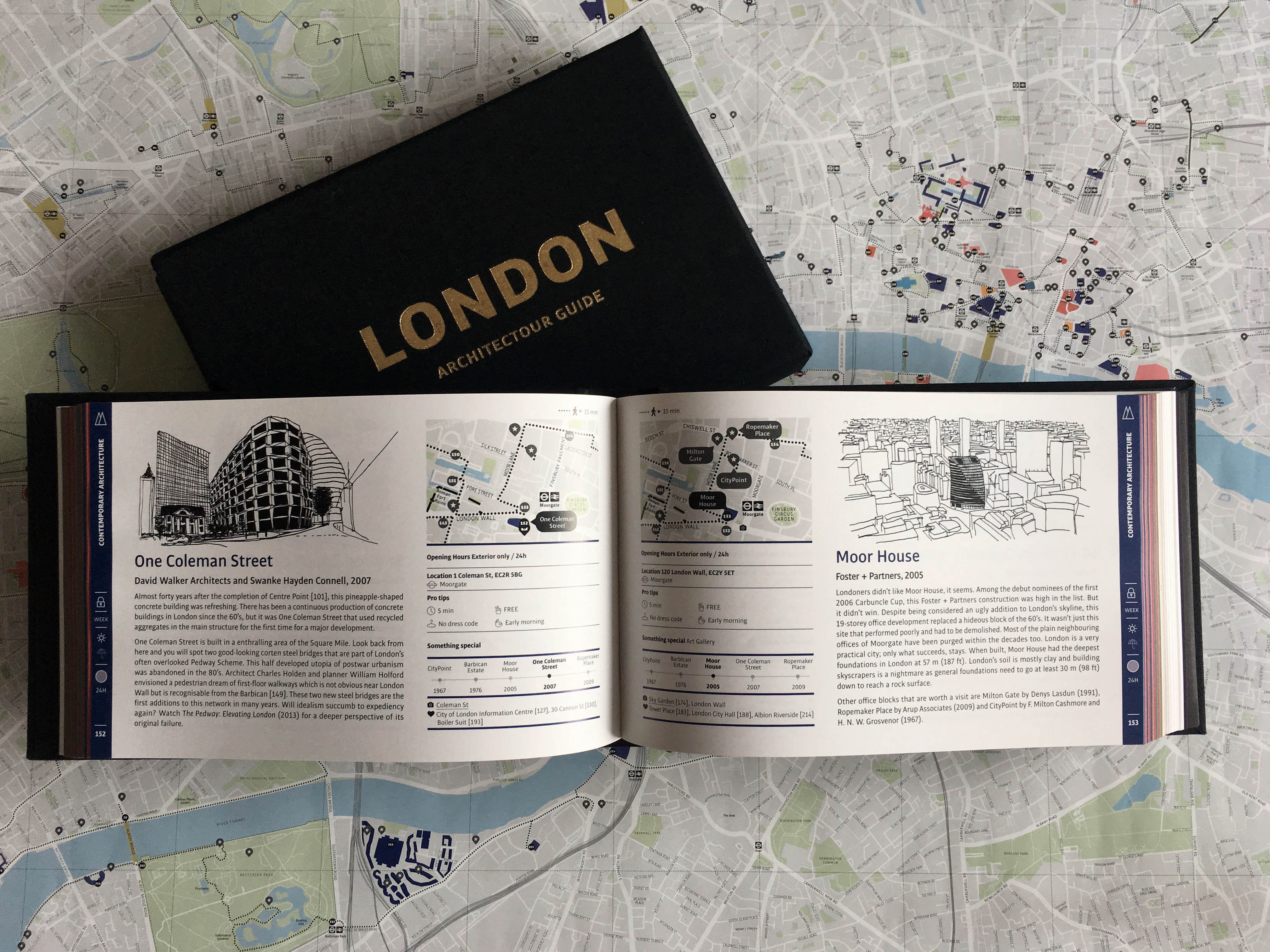12 Brutalist Masterpieces Not to Miss in London
Looking for London’s concrete wonders? Bow down to worship these twelve buildings that shape the capital’s Brutalist architecture
Solid and solemn, concrete buildings have developed an increasing likability amongst Londoners. More specifically, roughly-finished concrete specimens. Though some of these buildings have proved to be controversial — especially between people who have actually lived in them — they have progressively achieved cult status and are well worth a pilgrimage.
Dear architect, if this unembellished style makes you go weak at the knees, you are going to rejoice in this list very much indeed. And if you want to visit them in person, book a Brutalist London Tour with us.
For more inspiration, get your Architectour Guide of London
1. Barbican Estate

Barbican Estate ©Architectour Guide
Although most Brutalist examples were constructed as welfare estates, Barbican wasn’t and one can immediately appreciate that in the details: the generosity of space and green areas, cultural program and its pick-hammered finish (an architectural luxury). This late example of Brutalism built in 1976 is especially interesting because it was the second project of this type by Chamberlin Powell and Bon. The nearby Golden Lane Estate is a different story.
Architectour Tip: Barbican Estate is best photographed from Tower 42 (see sketch below)
Location: Silk St, London EC2Y 8DS
2. National Theatre

National Theatre ©Architectour Guide
Denys Lasdun — the eminent architect behind a good number of concrete buildings in London — never intended the National Theatre to be Brutalist. And if you take their Architecture Tour (which we highly recommend), they will repeat this a million times. Sorry NT, you are Brutalist Brutalist Brutalist. The theatre is in fact three theatres and about 25 new productions are performed here every year.
Architectour Tip: Don’t miss their bookshop 😍
Location: Upper Ground, Lambeth, London SE1 9PX
3. Centre Point
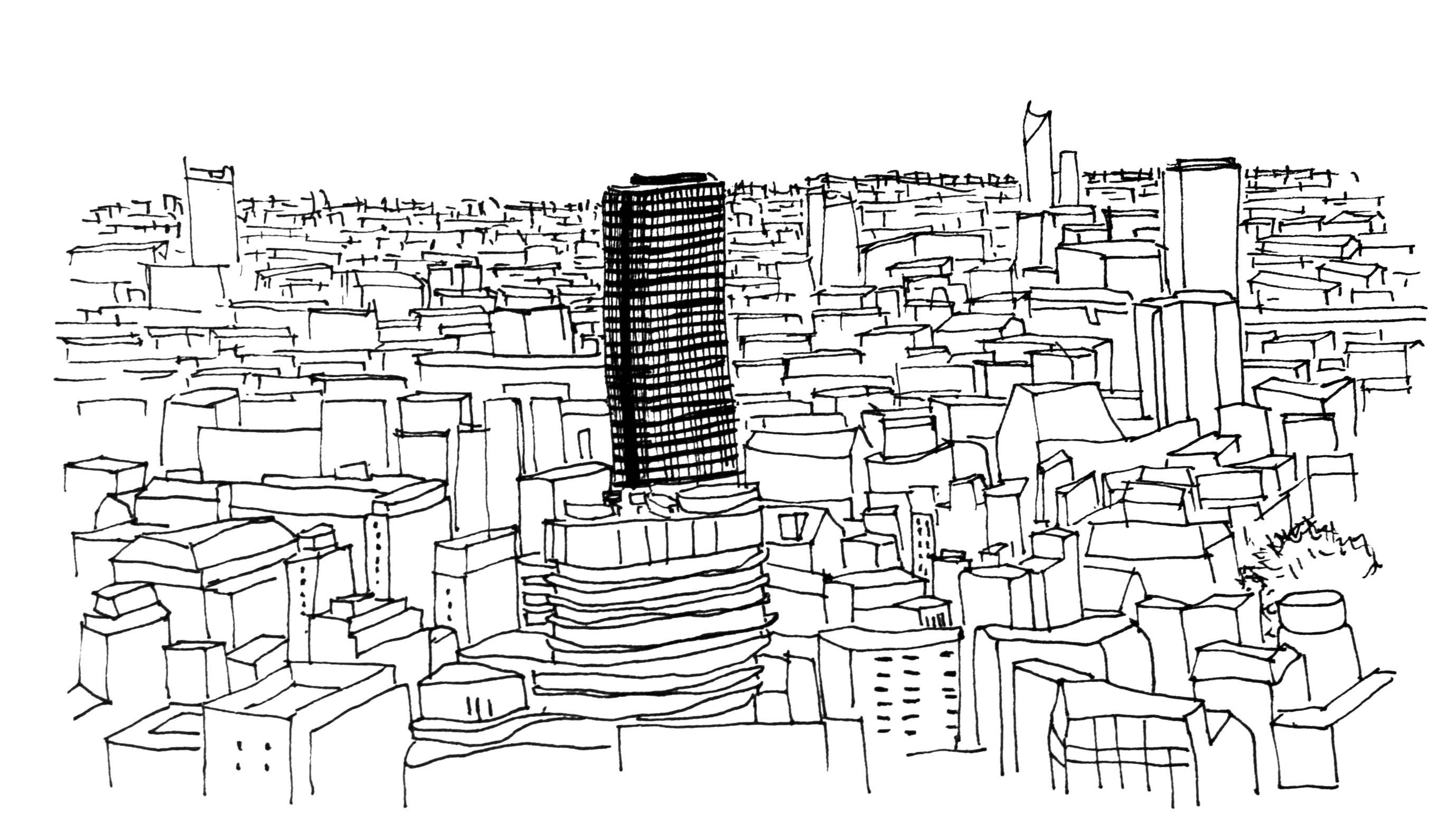
Centre Point ©Architectour Guide
Not many people know that the reason why it’s called Centre Point is because of its location at the junction of three different postcodes (fun fact for you!). What is absolutely mesmerising about this building it’s the geometrical concrete façade. This technical prowess allowed a faster construction which given the size and detail of its exterior it’s quite impressive.
Architectour Tip: Best photographed from BT Tower
Location: 103 New Oxford St, WC1A 1DD
4. Alexandra Road Estate
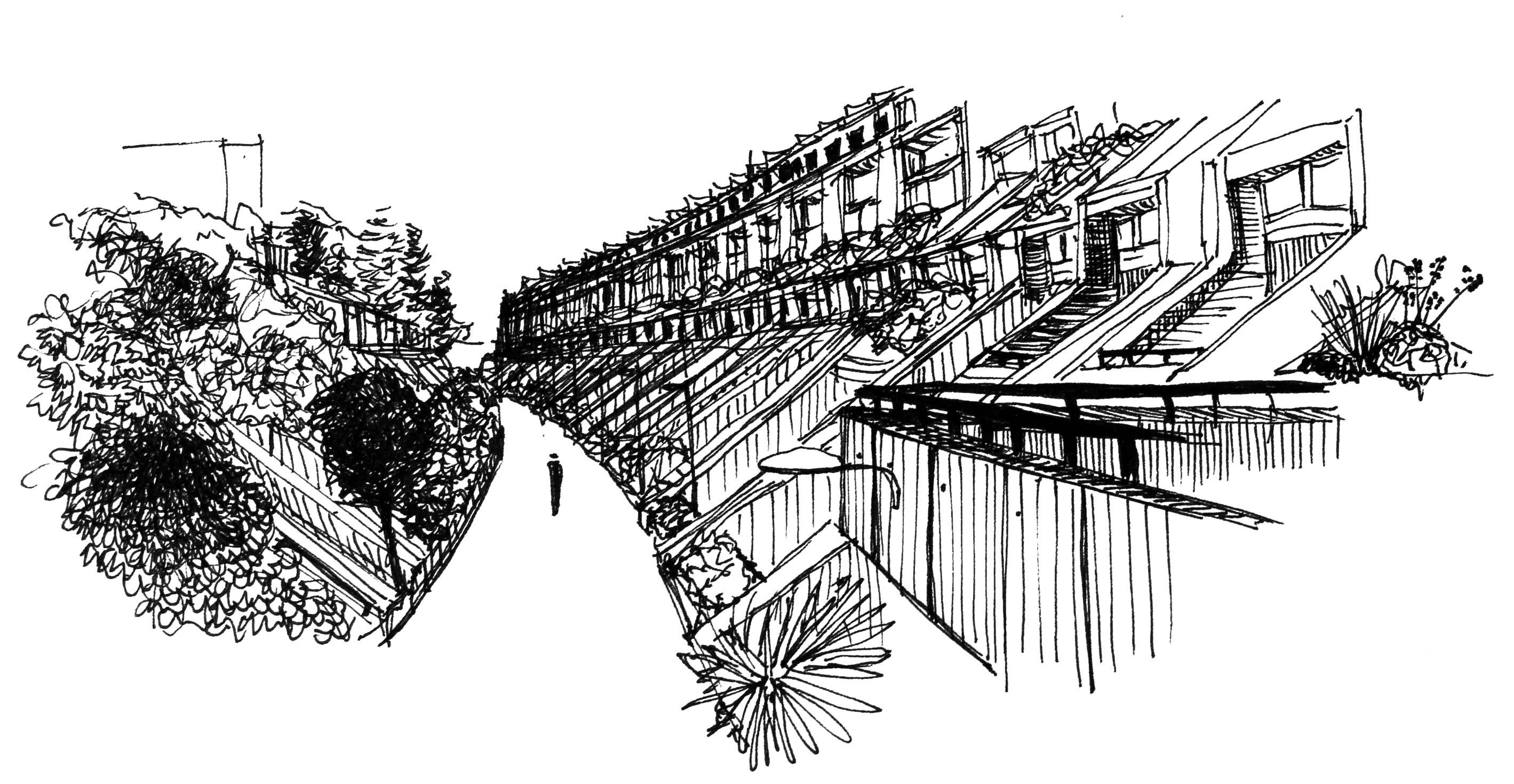
Alexandra Road Estate ©Architectour Guide
Neave Brown, who recently passed away, was awarded the Royal Gold Medal (the UK’s highest honour in architecture) thanks to this social housing complex. It was an economic disaster, took longer than scheduled and ended his career. Impressively, years after its completion in 1978, less than 20% of the flats remain social housing. Alexandra Road Estate — with its overgrown lush terraced greenery — has aged well.
Architectour Tip: Make this a priority to visit during Open House London
Location: 90B Rowley Way, London NW8 0SN
5. Trellick Tower

Trellick Tower ©Architectour Guide
We hate this building. Read page 69 of our book for the full picture.
Architectour Tip: Best visited from a distance
Location: 5 Golbourne Road, W10 5PL
6. Royal College of Physicians

Royal College of Physicians ©Architectour Guide
This superb building by Denys Lasdun (of NT too) is a robust structure in mosaic clad concrete. The design is a bold and wonderful addition to a very traditional area. And the three thin pillars that make the front entrance are the cherry on the cake. Denys, what were you thinking? Whatever it was, we love you for those marvellous pillars!
Architectour Tip: The RCP’s Museum has a moustache spoon you have to see😂
Location: 11 St Andrews Pl, London NW1 4LE
7. Stockwell Bus Garage

Stockwell Bus Garage ©Architectour Guide
An increasing need for sheltering the more than 200 buses that run in this area, made this building come to life. The requirements — a big unobstructed space — made steel the perfect ally. However, after the war, steel wasn’t abundant and concrete was chosen instead. The stunning vaulted ceiling is supported by two-hinged arched ribs and crossed by smaller ones.
Architectour Tip: If you go there at 2.30pm when they are about to close, you might get permission to wander around
Location: Binfield Rd, London SW4 6ST
8. Southbank Centre
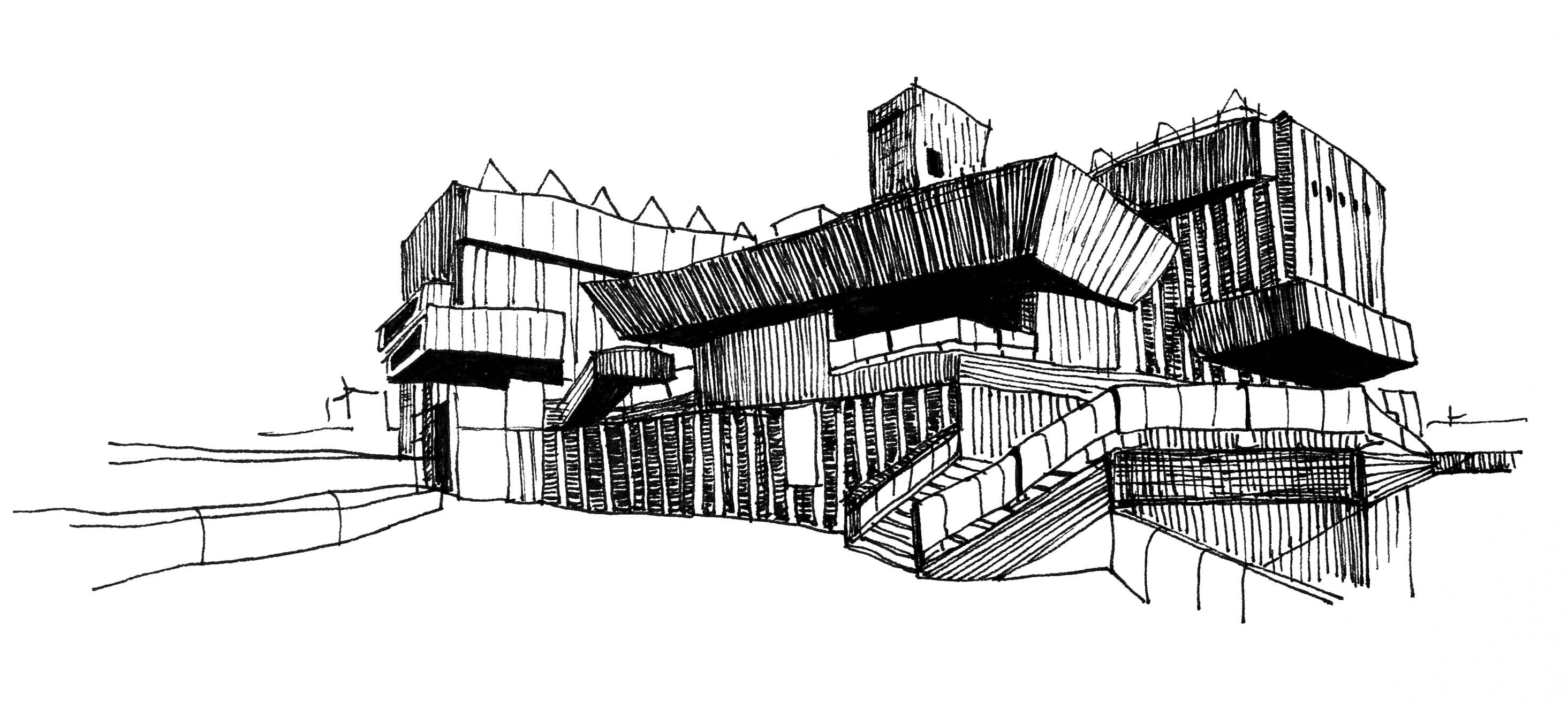
Southbank Centre ©Architectour Guide
This old neighbour of National Theatre is what remained after the Festival of Britain of 1951. The other buildings were progressively cleansed from the area. Southbank Centre, a synonym of hope after the war, is still an impressive complex though. The exciting exterior spaces change both in plan and elevation and are fun to explore.
Architectour Tip: Don’t miss the Queen Elizabeth Hall Roof Garden
Location: Belvedere Rd, SE1 8XX
9. Space House

Space House ©Architectour Guide
Space House, now known as One Kemble street, is the younger sibling of Centre Point (number three of this list). The façade of this little gem is extra special and it was built around the same time with similar construction techniques. However, the circular shape of the plan makes it even more impressive. An innovative precast concrete grid allowed this form and — fun fact — it didn’t need scaffolding.
Architectour Tip: Early in the morning the light is wonderful here 👌🏼
Location: 1 Kemble St, WC2B 4AN
10. 102 Petty France
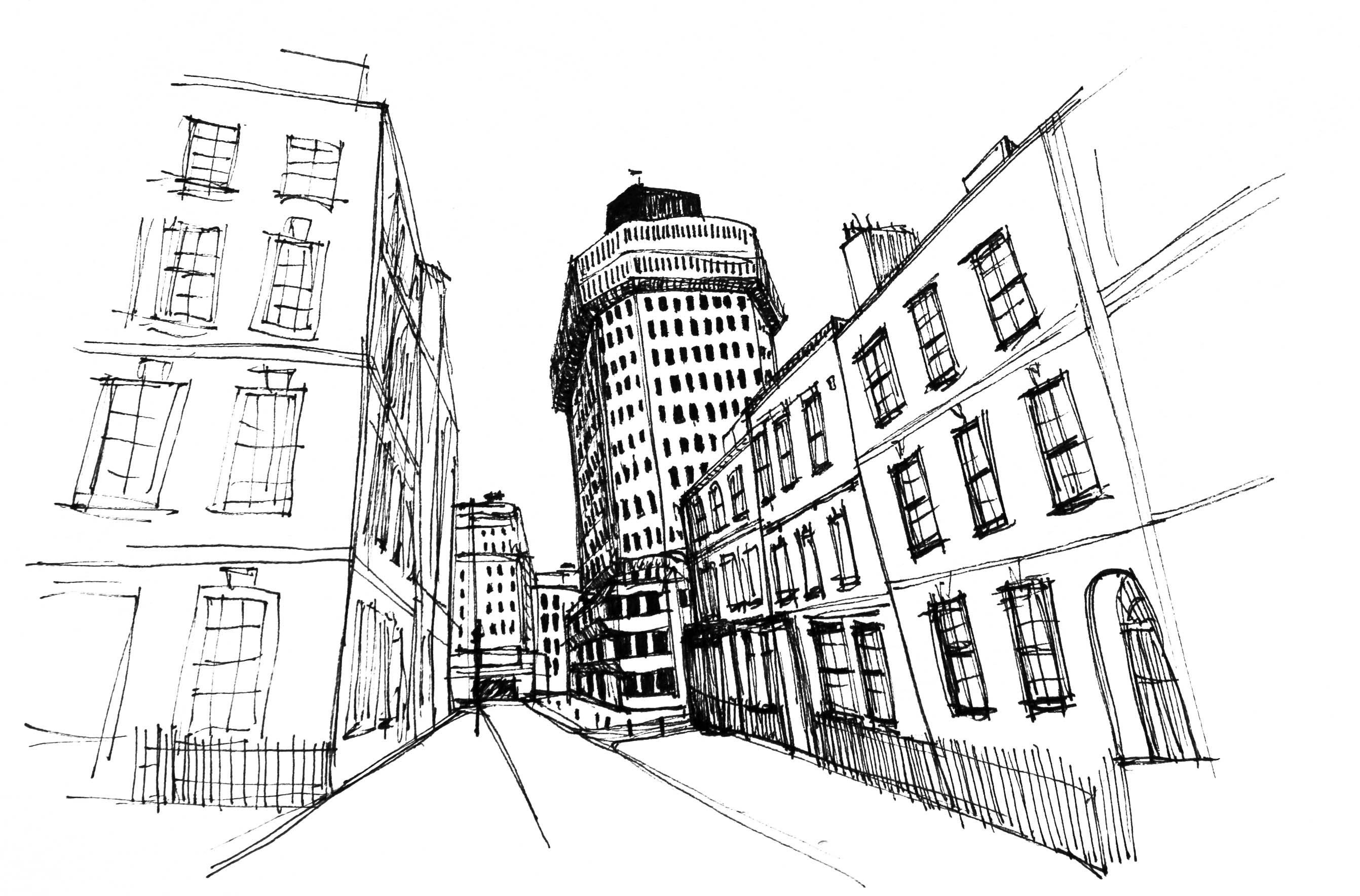
102 Petty France ©Architectour Guide
A predecessor of 20 Fenchurch Street? Perhaps. But it’s a governmental building so it’s ok. 102 Petty France, formerly known as UK Home Office, houses the Ministry of Justice. It was built in 1976 and there is something unique, raw and brutal about this structure that you can only feel when you visit it in person.
Architectour Tip: Visit in person for God’s sake!
Location: 102 Petty France, Westminster, London SW1H 9AJ
11. Balfron Tower

Balfron Tower ©Architectour Guide
Ernö Goldfinger designed this looming and unmissable monster for some of East London’s poorest residents. He even lived in one of the flats with his wife to ‘test’ his architectural ideas but soon moved out when it became an appalling place to live. Its proximity to Canary Wharf eventually ‘forced’ its reconversion to luxury flats for a wealthier clientele.
Architectour Tip: Best picture is from Chrisp Street Market’s Clock Tower
Location: St Leonards Road, E14 0QT
12. Welbeck Street Car Park

Welbeck Street Car Park ©Architectour Guide
This diamond-shaped concrete jewel of Brutalism is under threat to be demolished, so you’d better visit sooner than later. It was built in 1971 by Michael Blampied and Partners and in 2016 Shiva Hotels bought the car park for around £100m (yikes!). Despite its striking design and beauty, it didn’t meet the listing requirements and its due to be demolished.
Architectour Tip: MEATliquor on the ground floor is one of those dirty but great places to have burger and chicken wings in London
Location: 77 Welbeck St, W1G 0BB
We hope you liked this list and encourage you to visit these places in person. Let us know in the comments what other Brutalist buildings you love in London.
These and other amazing locations on Architectour Guide of London

